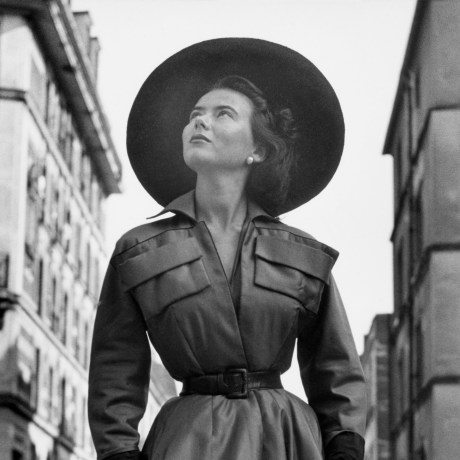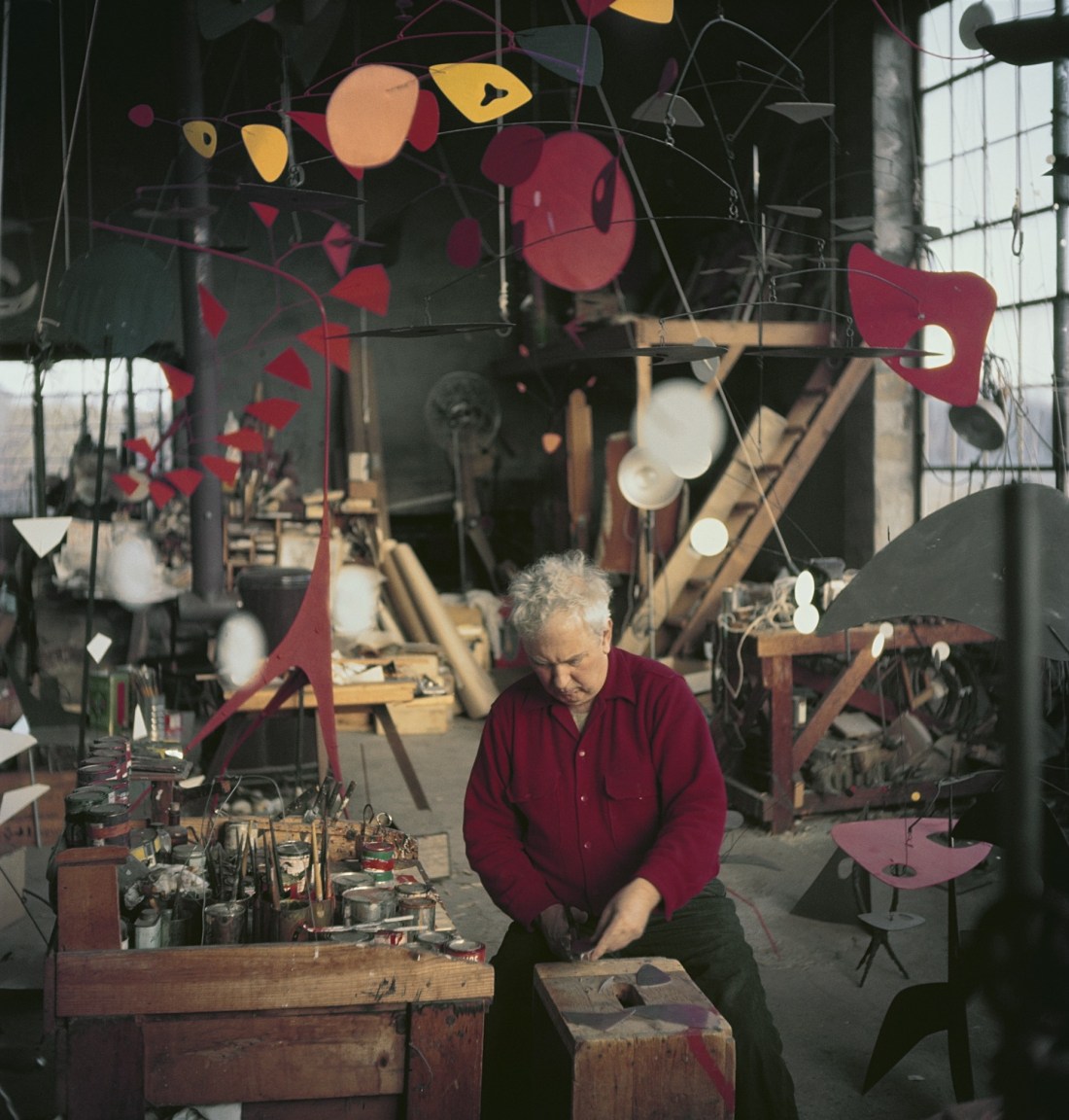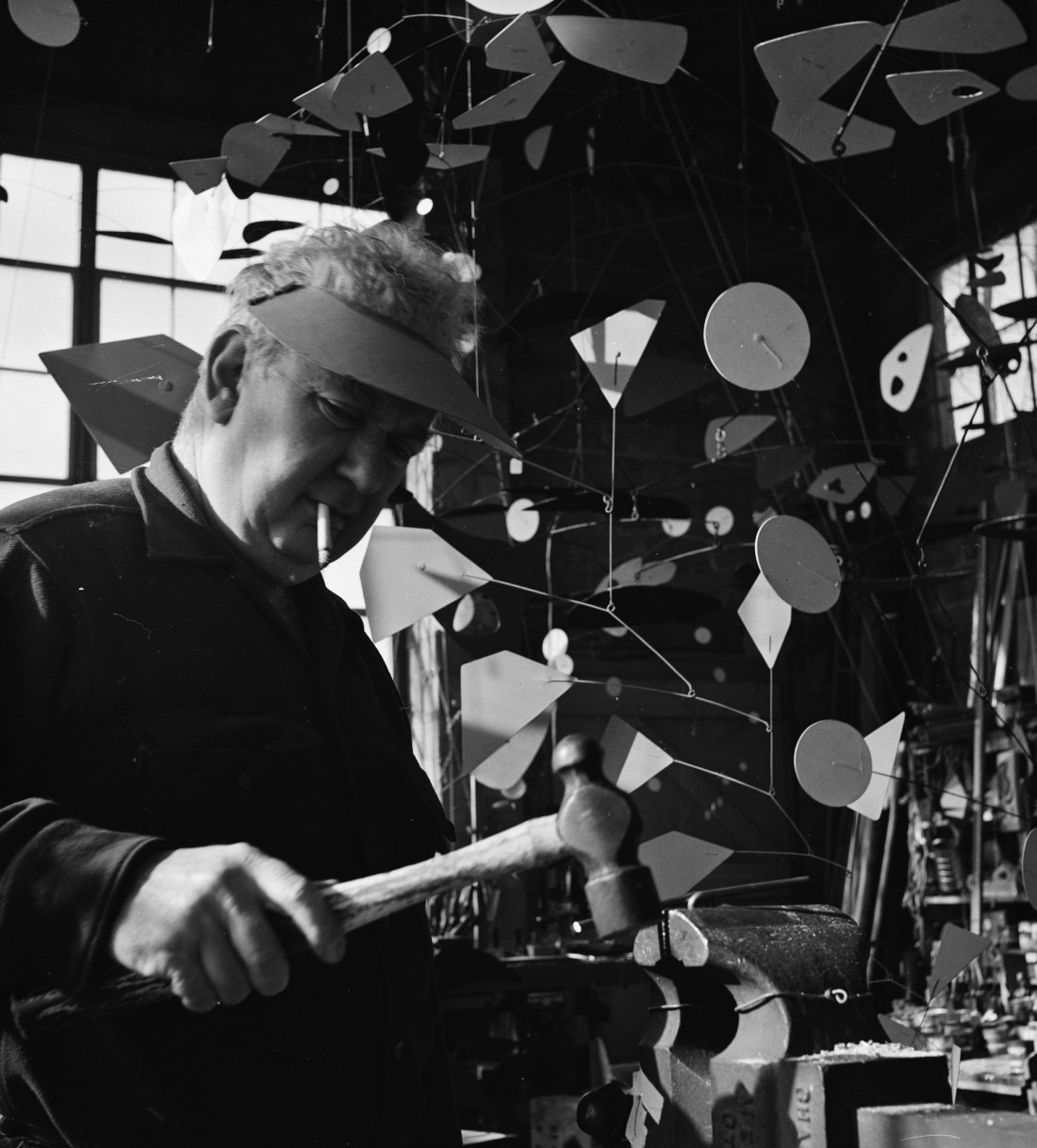
By 1952, American sculptor Alexander Calder was a celebrated artist, known for his innovative kinetic “mobiles” and static “stabiles”—terms coined in 1931 and 1932 by artists Marcel Duchamp and Jean Arp respectively, specifically for Calder’s work. Striking and dynamic, Calder’s abstract creations used form and motion to transform space in entirely new ways.
That year, he was selected to represent the United States in the 26th Venice Biennale, an international exhibition of contemporary art. He went on to win the Grand Prize for sculpture in that exhibition. To celebrate this achievement, the August 25, 1952 issue of Life magazine featured a story on Calder, with photographs taken at his studio in Roxbury, Connecticut by Gordon Parks.
In 1951 Calder participated in a symposium, “What Abstract Art Means to Me,” held at the Museum of Modern Art, New York, in conjunction with the exhibition Abstract Painting and Sculpture in America. In The Museum of Modern Art Bulletin, published that spring, included statements from six of the artists. Calder’s text provided a concise explanation of his conceptual framework:
The underlying sense of form in my work has been the system of the Universe, or part thereof. For that is a rather large model to work from. What I mean is that the idea of detached bodies floating in space, of different sizes and densities, perhaps of different colors and temperatures, and surrounded and interlarded with wisps of gaseous condition, and some at rest, while others move in peculiar manners, seems to me the ideal source of form. I would have them deployed, some nearer together and some at immense distances. And great disparity among all the qualities of these bodies, and their motions as well.

Gordon Parks, Untitled, Roxbury, Connecticut, 1952.

Gordon Parks, Alexander Calder, Roxbury, Connecticut, 1952.
Calder’s Roxbury studio (built on the foundation of an old dairy barn), was likewise a laboratory for these visual experiments, filled with interventions and tools that reflected his intuitive approach to sculpture. As the Life article describes:
The whole studio is rigged up like a circus tent with an elaborate system of ropes and pulleys with enable Calder to get at any aerial act his wants. In spite of the fact that he is often labeled a machine-age sculptor, Calder has only a grindstone and a drill that are run by motor. Some of his implements might be found in any layman’s tool chest: hammers, files, vises, metal clippers—but there is a distinctive assortment Calder has designed for his own needs: a wire straightener, a wire twister, a device for locating the center of gravity of a metal shape.
Accompanying this text are Gordon Parks’s photographs of Calder and his work, which beautifully echo his process and style: There are images of mobiles against floating in darkness, some showing Calder himself emerging from the shadows to adjust a form. Other images show Calder surrounded by his creations in his studio, taken as if one were taking a glimpse inside his mind. Although the images do not instantly bring to mind the photographic style Parks had become known for, they in fact showcase what Parks excelled at: Adjusting his approach as a form of collaboration with his subject. His photographs of Calder were intended to bring his work to life on the printed page—its dynamism, spatial transformation, and sense of movement.
It is an interesting coincidence that this issue of Life features yet another example of Parks’s collaborative approach with another creative—the author Ralph Ellison. The opening pages of the magazine feature their important collaboration, “A Man Becomes Invisible,”which celebrated the publication of Ellison’s groundbreaking novel Invisible Man earlier that year. The issue in fact also included a third, cover story that included photographs of college fashion by Parks, “Campus Come-Ons” (although the cover image was taken by John Raymond Solowinski, not Parks). But it is “A Man Becomes Invisible” that sheds light on Parks’s approach to Calder’s studio: Invisible Man served as a stark account of America’s racial divisions, written in a style that collapsed distinction between realism and fantasy. Likewise, Parks’s photographs hewed to Ellison’s prose style—surreal images that blurred the lines between staged and documentary images that sought to bring to make real the Black experience in America.
While the images Parks created in Calder’s studio served to represent an artistic practice, they likewise go beyond mere documentation, illuminating the artist’s process, drive, and imagination. The three stories featured in the August 25, 1952 issue of Life—about an artist, a novel, and the latest fashions—have little to do with one another, they nonetheless highlight Parks’s own extraordinary process: That is, his collaborative, inventive approach to all his subjects that honors and pays tribute to them.
All works by Alexander Calder © 2023 Calder Foundation, New York / Artists Rights Society (ARS), New York.

Gordon Parks, Untitled, Roxbury, Connecticut, 1952.